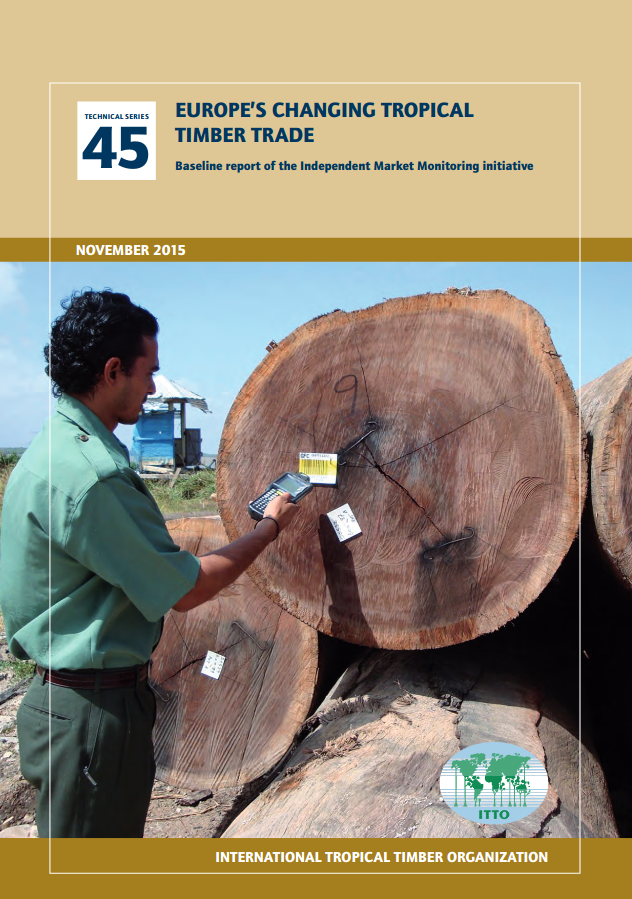Europe´s Changing Tropical Timber Trade 2004 to 2014
DOWNLOADS
CATEGORY
Annual Report
PUBLISHED DATE
November 2015
AUTHORS
Sarah Storck, Rupert Oliver
EDITORS
Steven Johnson, Mike Jeffree
DESCRIPTION
This baseline report was prepared during the IMM inception phase to determine the position in the EU market of wood products exported by VPA partner countries prior to the issuance of FLEGT licences. Recognizing that market trends in the EU and VPA partner countries are highly dependent on trade with other regions of the world, the report also puts trade flows between the EU and VPA partner countries in their global context.
KEY FINDINGS
The report covers all products within the scope of existing or potential future VPAs and includes the following chapters (and parts thereof) of the international Harmonized Commodity Description and Coding System: all products in Chapter 44 (Wood); products identified as containing wood in Chapter 94 (Furniture); virgin wood-based pulp products in Chapter 47 (Pulp); and all products in Chapter 48 (Paper). Collectively, wood and wood furniture are referred to here as wood products and dealt with separately from pulp and paper.
The report focuses on the trade between the 28 EU member states and the following 17 tropical timber- supplying countries at various stages of the VPA process:
- VPA-implementing countries: Cameroon, the Central African Republic, the Congo, Ghana, Indonesia and Liberia.
- VPA-negotiating countries: Côted’Ivoire, the Democratic Republic of the Congo (DRC), Gabon, Guyana, Honduras, the Lao People’s Democratic Republic (Lao PDR), Malaysia, Thailand and Viet Nam.
- VPA-preparing countries: Cambodia and Myanmar
Collectively, these countries are referred to here as VPA partner countries. The report contains country- specific production and trade data for the six VPA- implementing countries, but this summary presents mainly aggregated data. Data are analyzed at decadal timescales so that potentially significant long-term trends affecting the trade in wood products from VPA partner countries can be identified. The main report describes the data sources used.
VPA partner countries’ share of global wood-product supply
VPA partner countries had a total forest area of 486 million hectares in 2010, comprising
169 million hectares in VPA-implementing countries, 276 million hectares in VPA-negotiating countries, and 42 million hectares in VPA-preparing countries. The forest area in VPA partner countries was about 26% of the total forest area in the tropics and 12% of the global forest area.
VPA partner countries had a total growing stock of 82 billion m3 in 2010, nearly all of which was hardwood. VPA partner countries accounted for 17% of the total global growing stock and 24% of global hardwood growing stock in 2010. Growing stock was 27 billion m3 in VPA-implementing countries, 53 billion m3 in VPA-negotiating countries, and 2 billion m3 in VPA- preparing countries.

